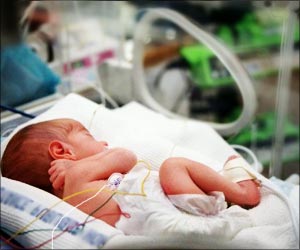Study identifies link between maternal exposure to ambient particulate matter (PM2.5) and preterm birth.

- Preterm birth increases risk of death and long-term disabilities.
- Recent study suggests that maternal exposure to ambient particulate matter (PM2.5) could be a risk factor for preterm birth.
- This suggests that air pollution may not just harm people who are breathing the air directly but it may also seriously affect a baby in its mother's womb.
Major sources of PM2.5 are from diesel vehicles, to agricultural waste-burning. It is harmful to human health, as it can penetrate deep inside the lungs.
Results suggest that addressing this issue could save babies' lives and improve health outcomes.
Preterm Birth
Preterm birth occurs at less than 37 weeks of gestation. It increases the risk of death or long-term physical and neurological disabilities.
The direct and indirect costs associated with preterm birth is huge.
But this research suggests that maternal exposure to air pollution could also be a risk factor.
Findings from the New Study
For the first time the new research quantifies the global impact air pollution by combining data about air pollution in different countries with knowledge about how exposure to different levels of air pollution is associated with preterm birth rates.
"This study highlights that air pollution may not just harm people who are breathing the air directly - it may also seriously affect a baby in its mother's womb," said Chris Malley, a researcher in SEI's York Centre, at the University of York, and lead author of the study.
"Preterm births associated with this exposure not only contribute to infant mortality, but can have life-long health effects in survivors.This study adds an important new consideration in measuring the health burden of air pollution and the benefits of mitigation measures," he said.
PM2.5-associated preterm births were largest in South Asia and East Asia , which together contributed about 75% of the global total.
India alone accounted for about one million of the total 2.7 million global estimate, and China for about another 500,000.
The numbers of preterm births were high in Western sub-Saharan Africa and the North Africa/Middle East region, with a large contribution from desert dust.
"There is uncertainty in these estimates because the concentration-response function we used is based mainly on studies in the United States and Europe," Malley said.
"Not only don't we know whether the relationship is the same at much higher concentrations, such as those found in some Indian or Chinese cities, but the prevalence of other risk factors also varies considerably. Expectant mothers in many places are also exposed to high levels of indoor pollution from cooking smoke. Resolving these uncertainties will require more studies in these countries and regions." Malley added.
"To reduce the PM2.5 problem, you need to control many different sources, but in many developing countries, certain emission sources dominate," said Johan C.I. Kuylenstierna, co-author of the study, SEI's Policy Director.
"This includes emissions from cooking with biomass fuels (which is also associated with very harmful indoor pollution), diesel vehicles and other transport, and particles emitted when agricultural residues are burned in fields.In a city, maybe only half the pollution comes from sources within the city itself -- the rest will be transported there by the wind from other regions or even other countries. That means that often regional cooperation is needed to solve the problem." Kuylenstierna added.
The study is published in the journal Environment International.
Reference
- Chris Malley et al. Preterm birth associated with maternal fine particulate matter exposure: A global, regional and national assessment. Environment International ; (2017) doi.org/10.1016/j.envint.2017.01.023
Source-Medindia












